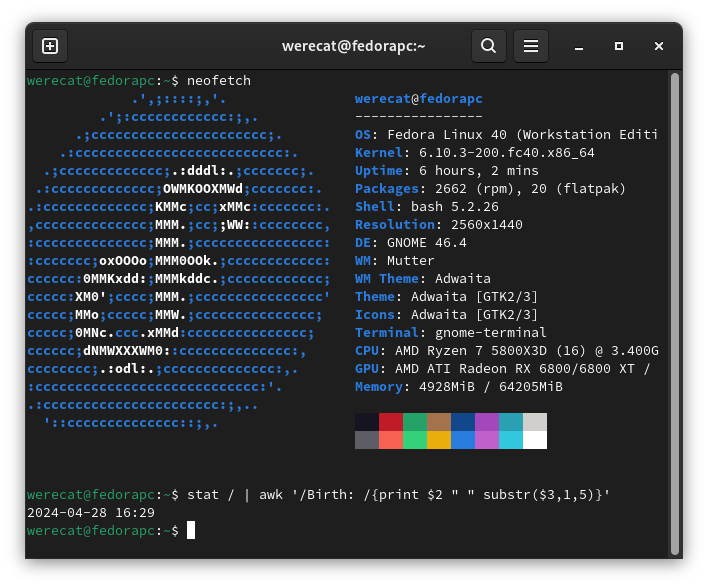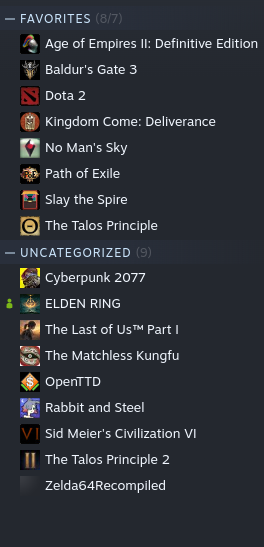I've tried to switch multiple times and always found or encountered some issue that got me back to Windows (on desktop PC).
Last year it was after 2 months on Fedora 38 KDE when I had enough with the KDE Window Manager acting weird and broken unusable VRR on desktop and some other smaller but daily issues that I went back to W11 on my PC.
I like GNOME over KDE and back then there was no VRR support on GNOME so I only had to stick with KDE, now it's a different story.

I still have some minor annoyance which are probably solvable but I don't know how as I didn't put enough effort in finding solution.
Namely:
1.) Sometimes my 2nd monitor after boot remains blank and I have to unplug and plug back in the DP cable from the graphics card. Typically happens after a kernel update or restart but rarely on cold boot. I've seen others having this issue on Fedora40 but I haven't seen any solution mentioned.
2.) Steam UI hangs up sometimes for several seconds when trying to navigate fast trough it and especially if it needs to pop a different window.
3.) GPU VRAM OC is completely busted and even doing +-1MHz will result in massive artifacting even on desktop, not a big deal but I would take the extra 5% boost I can have from VRAM OC on Windows :)
4.) After every Kernel update I have to run two commands to get my GPU overclock to work again. I haven't figured out yet how to make a scrip that can read output from 1st command and copy it into 2nd command so I just do it manually every time which is roughly once a week.
5.) Free scrolling does not work in Chromium based browsers :( Luckily Vivaldi has some nice workaround with mouse gestures but I would still like free scrolling like on Windows.
And these are about the only annoyance I found worthwhile to mention.
Gaming works fine.

The apps I use typically work fine on Linux as well. Mangohud is amazing. No issues with audio unlike my last experience. Heck even Discord has no issues streaming video and audio now despite just using the web app. VRR despite being experimental works flawlessly on GNOME for me. I'm happy.
Regarding 1: if you open up dmesg after it happens and you see an error regarding "No edid read", your GPU is having a hard time automatically getting the monitor's edid over display port. My 7800xt has this issue.
If your monitor setup doesn't change much, you can manually set the edid on a per output basis. Here is a good guide.
Also, regarding 3: you may need to set your amdgpu feature mask in your kernel parameters.
Thanks!
1.) will definitely give it a try 3.) I have set the amdgpu feature mask otherwise I wouldn't even have access to the power limit, voltages, etc... but VRAM overclocking just does not work. Everything else seems to work fine.